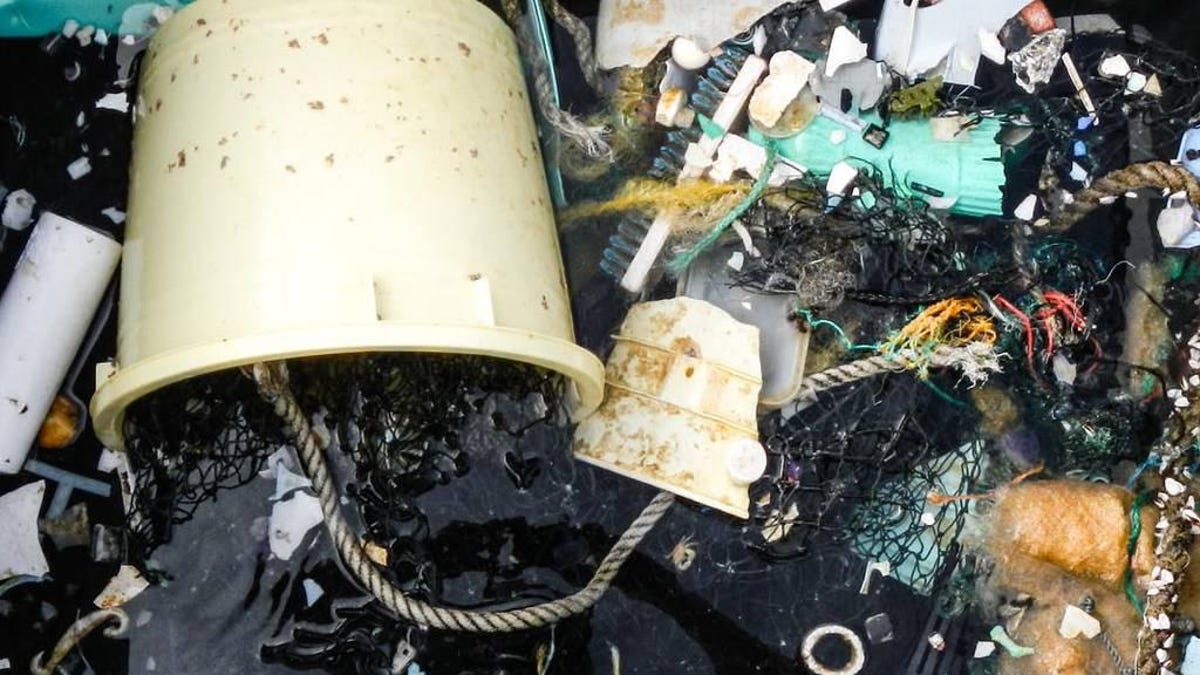Great Pacific Garbage Patch growing into a plastic monster
Plastic pollution in the Pacific Ocean is out of control as a new study finds the Great Pacific Garbage Patch is now three times the size of France.
We've known for a long time the world has an ocean pollution problem stemming from plastic junk. We just didn't know how bad it had gotten.
The Great Pacific Garbage Patch is the name given to an area of the Pacific Ocean between California and Hawaii where plastics of all kinds have been accumulating into one big watery junk pile. It contains everything from plastic buckets to discarded fishing nets. A new study shows the patch is bigger than previously thought and is also growing at an astounding rate.
A vessel pulls a "ghost net" out of the water during a survey of the Great Pacific Garbage Patch.
A team of scientists from The Ocean Cleanup Foundation, six universities and an aerial sensor company worked together on the ambitious study. They published the startling results Thursday in the journal Scientific Reports.
The team sent 30 vessels into the debris field simultaneously while also surveying the area by aircraft.
Most of the ships used surface-sampling nets, but the lead vessel used a trawling system to pick up bigger objects out of the patch. The fleet gathered 1.2 million plastic samples during the expedition.
The data now shows the garbage patch measures nearly 620,000 square miles (1.6 million square kilometers) and contains 1.8 trillion pieces of plastic that weigh as much as 500 jumbo jets. That's up to 16 times more plastic than shown in previous estimates.
"We were surprised by the amount of large plastic objects we encountered," said the expedition's chief scientist Julia Reisser, an oceanographer with The Ocean Cleanup Foundation.
Researchers are concerned about what can happen when larger plastics break down into hazardous microplastics, which the US National Oceanic and Atmospheric Administration says pose a potential threat to aquatic life. Marine animals can mistake the small plastic pieces for food.
The Ocean Cleanup Foundation is developing technologies designed to remove plastics from places like the Great Pacific Garbage Patch. The organization has estimated its floating debris-gathering systems could clean up half the patch within five years, though a Guardian report from 2016 questioned the feasibility of the project.
The foundation expects to launch its first cleanup system in mid-2018. With this new data on the size and growth of the garbage patch, the group may be facing a bigger challenge than it originally expected.
Rebooting the Reef: CNET dives deep into how tech can help save Australia's Great Barrier Reef.
Virtual reality 101: CNET tells you everything you need to know about VR.


